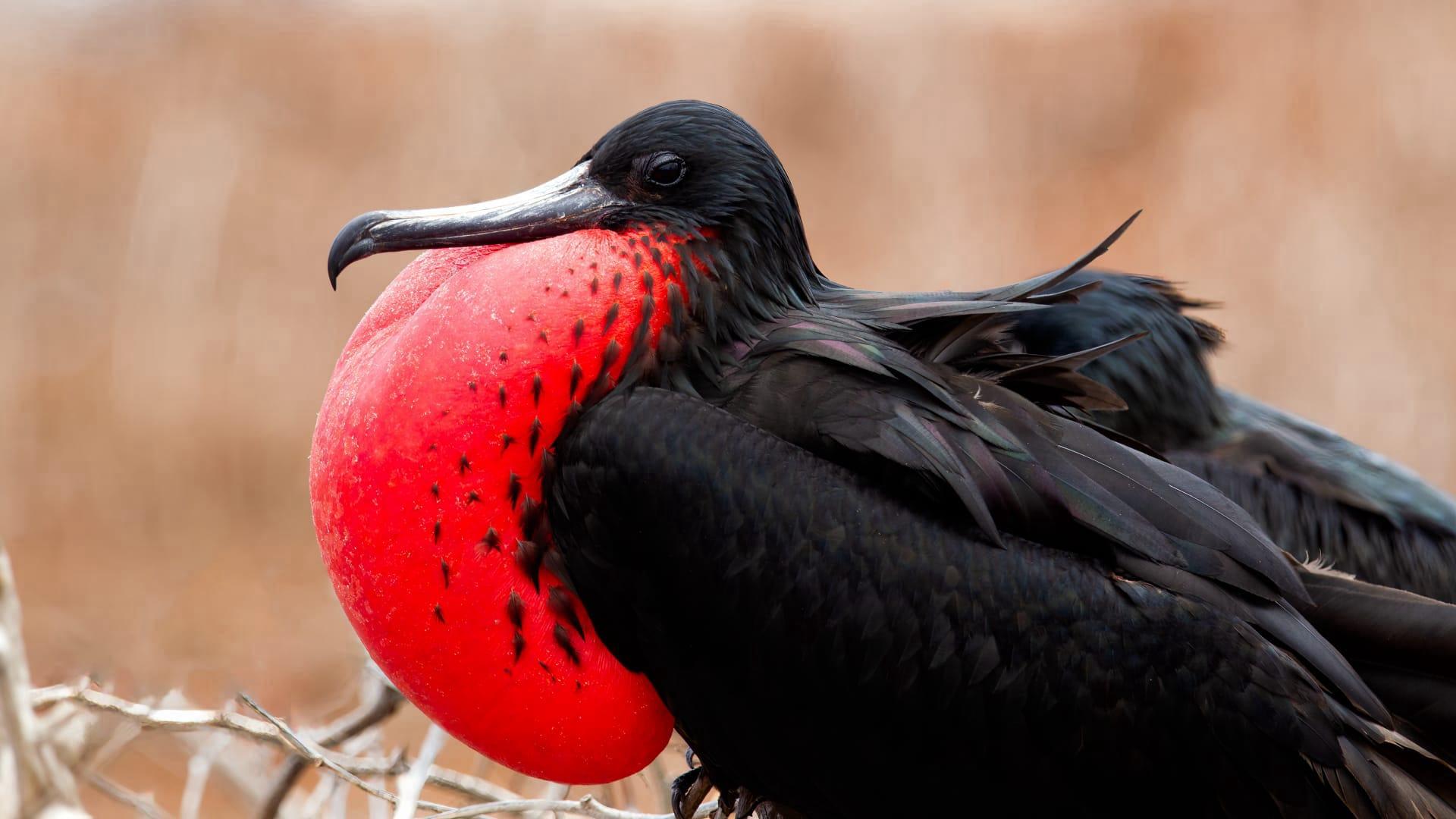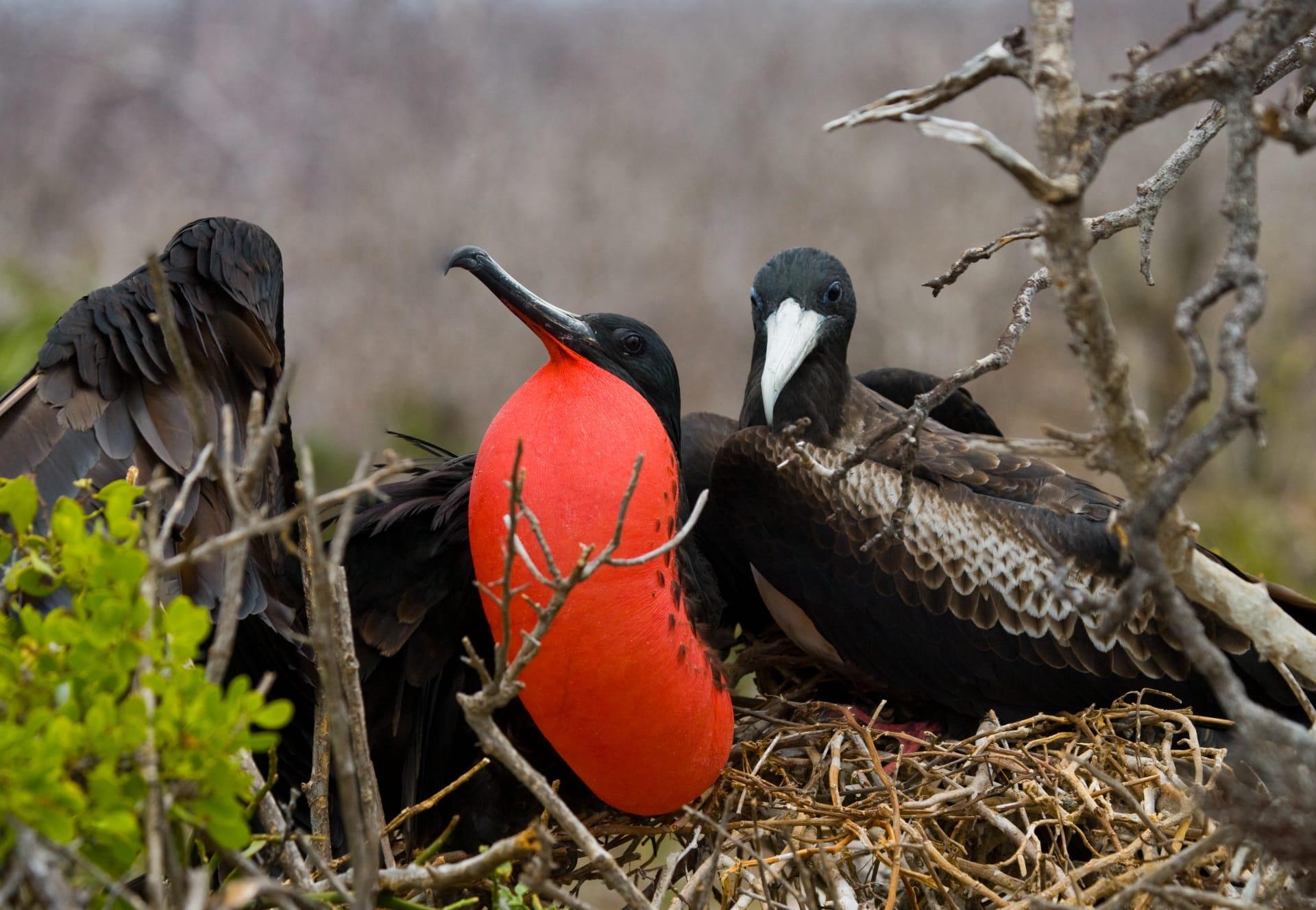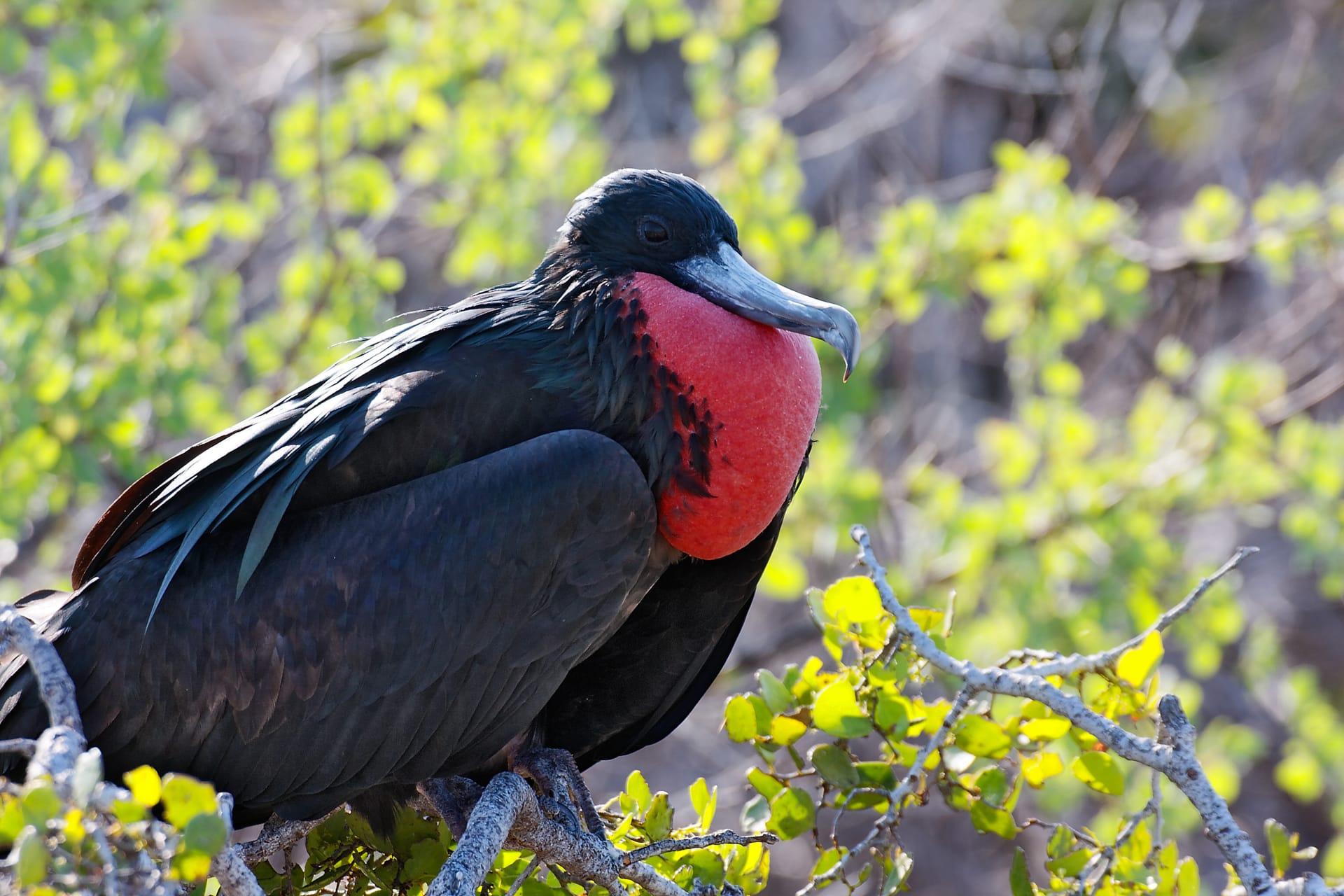Frigatebird Characteristics
- Home /
- Mini Encyclopedia /
- Animal /
- Frigatebird Characteristics
1
The Frigatebird, a remarkable avian species, flaunts a distinctive physique known for its large size and long lifespan. These birds, on average, span about 7.5 feet (2.3 meters) in wingspan, a feature that aids their extraordinary flight abilities. Weighing between 2.7 to 3.6 pounds (1.2 to 1.6 kilograms), they possess a relatively light frame compared to their wingspan. Frigatebirds can live up to 35 years, a testament to their resilience in the wild. This long lifespan is partly due to their minimalistic lifestyle and efficient energy use during flight.
Among the Frigatebird's most unique organs is its gular sac, predominantly found in males. This brilliant red sac can inflate like a balloon, a spectacle most prominent during mating displays. When inflated, it forms a striking contrast against the bird's predominantly black plumage, serving as a visual signal to attract females. This sac, which inflates in just a few minutes, is not just for show; it's a critical part of the bird's courtship ritual and plays a vital role in ensuring reproductive success.

2
Question: Why do Frigatebirds spend so much time in the air?
Answer: Frigatebirds are renowned for their extraordinary airborne abilities, spending most of their lives soaring in the sky. This behavior is largely due to their physical build; their large wings and light body allow them to glide effortlessly, conserving energy. They have the lowest wing loading (weight to wing area ratio) of any bird, which enables them to stay aloft for extended periods. Remarkably, Frigatebirds can stay airborne for weeks, traveling hundreds of miles without needing to land. This adaptation is crucial for their survival, as it allows them to cover vast oceanic distances in search of food, often relying on wind currents and thermals to maintain altitude with minimal energy expenditure.

3
Frigatebirds exhibit remarkable motion characteristics, primarily defined by their ability to glide effortlessly across vast distances. They are masters of the sky, utilizing their extensive wingspan to stay aloft for prolonged periods. These birds rarely flap their wings, instead relying on wind currents and thermal updrafts to travel. This efficient mode of flight enables them to cover hundreds of miles without rest, an adaptation essential for their oceanic lifestyle. Moreover, their ability to ascend to great heights, sometimes over 12,000 feet (3,660 meters), is a testament to their aerial prowess.
In terms of foraging behavior, Frigatebirds are adept at snatching prey from the ocean's surface, exhibiting a unique hunting technique. They are not typical divers; instead, they skim the water to catch fish, squids, and other marine animals. Their long, hooked beaks are perfectly designed for this purpose, allowing them to pluck prey with precision. Additionally, Frigatebirds are known for their kleptoparasitic tendencies, often chasing other seabirds to force them to regurgitate their food, which the Frigatebirds then snatch mid-air. This opportunistic feeding strategy is a key aspect of their survival in the nutrient-sparse open ocean.

4
Frigatebirds inhabit a range of tropical and subtropical regions, predominantly favoring island environments. They are typically found in the coastal areas, where the abundance of marine life meets their dietary needs. These birds prefer warmer climates and are commonly seen in the Pacific and Indian Oceans, as well as the Atlantic coast of the Americas. Their habitat choice is closely linked to their feeding habits, as they rely on the ocean for sustenance and prefer regions with abundant food sources and suitable air currents for efficient flight.
Reproduction in Frigatebirds is a unique process, characterized by elaborate courtship displays and extended parental care. The males exhibit a striking courtship display by inflating their red gular sacs and drumming them with their beaks to attract females. Once a pair forms, they build a nest together, often in low-lying bushes or trees. Frigatebirds are single-egg layers, and both parents share the responsibility of incubating the egg and feeding the chick. The chick-rearing period is notably long, lasting up to 11 months, which is one of the longest in the bird world. This extended care ensures the young bird's survival and learning of essential skills for independent life.

5
Book: "The Magnificent Frigatebird: Biology and Behavior" by Dr. Maria Anderson. Published in the United States in 2010, this comprehensive guide delves into the intricate world of the Frigatebird. Dr. Anderson, a renowned ornithologist, explores their unique flight mechanisms, breeding behaviors, and survival strategies. The book is lauded for its detailed descriptions and captivating narrative, making it an essential read for bird enthusiasts and researchers alike.
Book: "Wings Over Oceans: The Frigatebird's Journey" by David L. Thompson, released in the United Kingdom in 2015. Thompson, a wildlife photographer and writer, presents a stunning visual and textual exploration of the Frigatebird's life, focusing on their migration patterns and oceanic lifestyle. The book combines striking imagery with insightful commentary, offering readers an intimate look at these birds' adaptations to their marine environment.